By Smita Mukerji
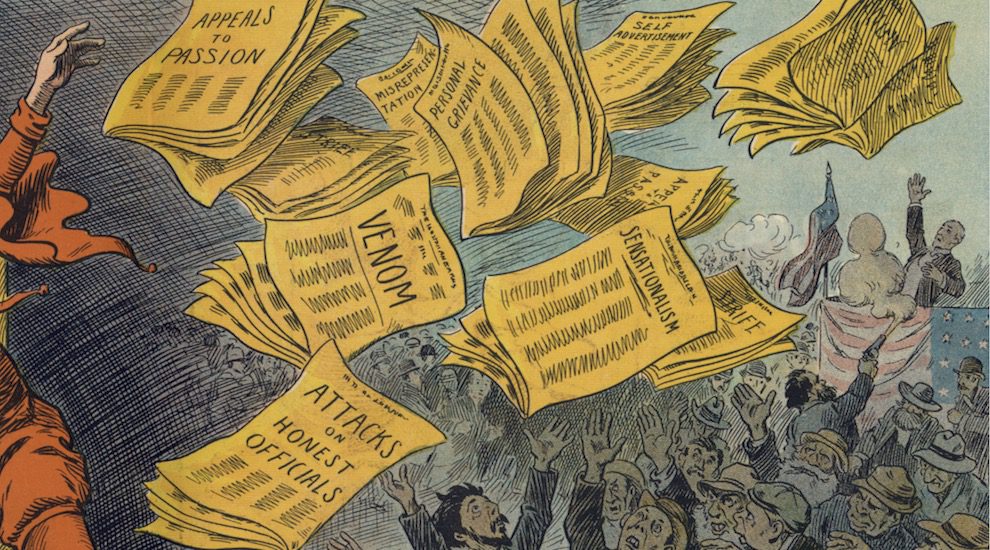
…And If You Disagree
You Are A Fascist, Bigoted Hindu!
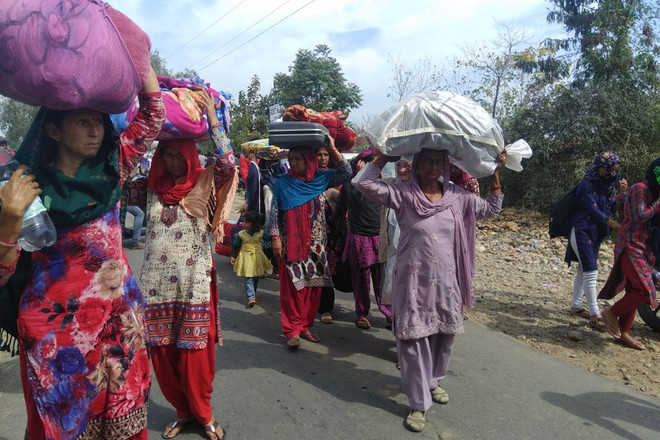
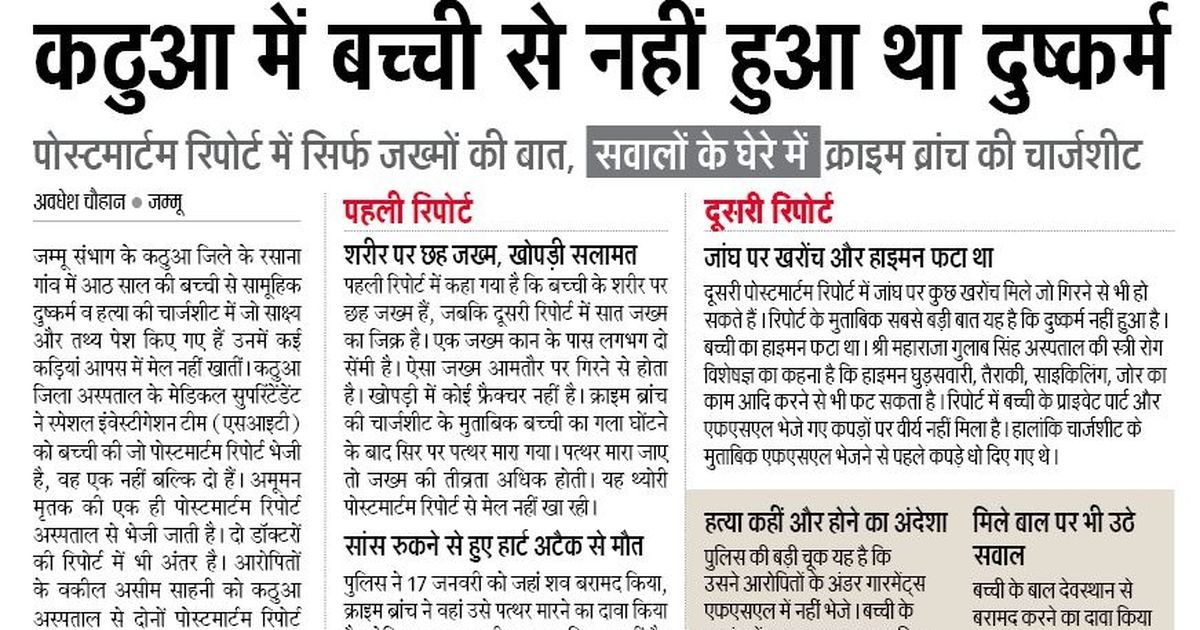
The furore drummed up by mainstream media and the usual attendant rabble-rousers in the incident of the murder and alleged rape of an 8-year old tribal Bakarwal girl, in Kathua city of Jammu division of the State of Jammu and Kashmir, once again served as an illustration of how the war of narrative is fought in our information age, through an elaborate agitprop of concerted selective projection and falsification of news. The incredibly diabolic acts alleged against the accused in the case were flashed as headlines all over the national news media almost with a relish, even as facts and circumstances surrounding the case emerge that point to serious lacunae in the story put forth in the chargesheet filed in the case and hint at a larger conspiracy by the hostile Jammu & Kashmir establishment. It is pertinent to mention here three other incidents in recent past, the factual background of which became known in the last days, that drives home this point only too clearly:
The first was the report of the Forensic Science Laboratory (FSL) that came out recently, which states that no traces of semen could be found in the exhibits submitted by Lady Shri Ram College students, who had alleged that miscreants had flung ‘semen-filled balloons’ at them during the Holi fest a couple of months earlier this year. Irrespective how preposterous this claim is to those with the most elementary knowledge of human anatomy and bodily functions, these claims were published prominently in the news media which had the effect, apparently with deliberate intention, of inducing shame among those who celebrate this major Hindu festival.
The second was the news on Thursday about findings of Pune Police that led to establishing links of Maoist terrorist agents in incitement of violence in the riots, no doubt orchestrated, in Koregaon Bhima region earlier this year. Predictably, the riots, which were nothing but unprovoked and destructive violence by political goons, were given the tint of ‘reaction against casteist oppression’ by the media.
The third event was the recent decision of the Punjab & Haryana High Court in the Junaid Khan ‘lynching’ case last year, in which the court concluded that the dispute had been over seats involving hurling of casteist remarks and nothing more, which had turned into an ugly scuffle and there was no evidence of any communal slurs on account of beef or pre-planned intent to cause harm or violence as had been portrayed in the sensationalised media reports about the incident.
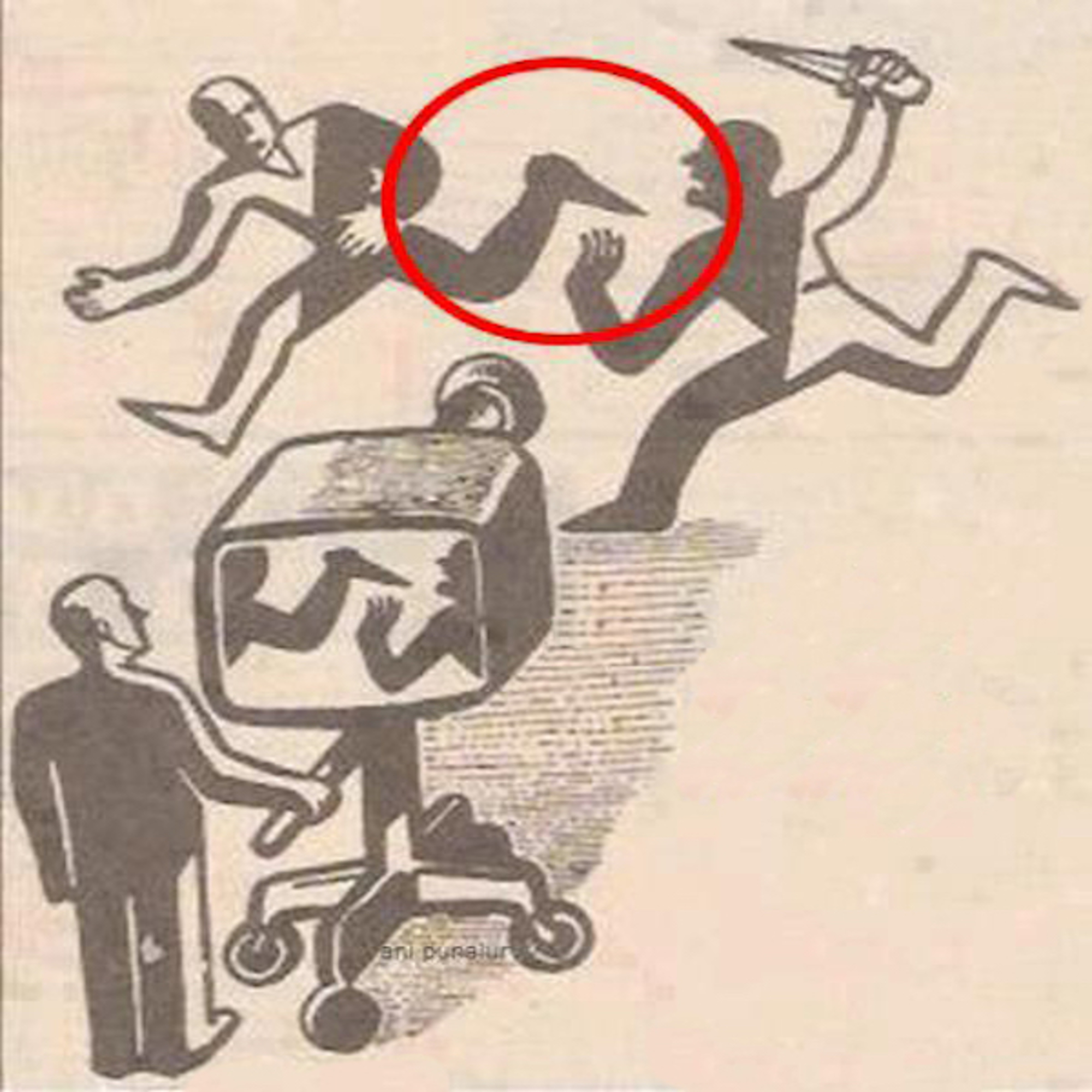
It is apparent that such pernicious disinformation had been spread deliberately in order to create disharmony and to demonise the majority Hindu community conjuring up an image of what was dubbed by these motivated lobbies as ‘rising intolerance’ and ‘Hindu extremism’. These attempts to malign the people of an aspiring new India and its culture by creating sensational fake stories and spreading them like wildfire all over national and international media, are by no means rare but appear to be part of a carefully planned strategy by forces inimical to the integrity of India as a unit. There was a series of such incidents reported in the most horrifying terms disturbing to common sensibilities (the bogey of attacks on churches, fake stories of Bangalore New Year ‘mass molestation’ and rapes alleged during the Murthal Jat agitation, purported attacks on ‘dalits’ in Una/Gujarat for skinning a dead animal, sporting moustache to watching ‘garba’, molestation of a dying woman in a Mumbai stampede) that painted a dire picture and created an air of unrest and insecurity. But all of these were subsequently found upon investigations to be either set up or misrepresented or simply false.
Here we revisit another such incident in 2015 which was the genesis of ‘beef politics’ in India, a classic case of a freak incident hijacked to create a perception of ‘Hindu attacks on minorities over beef’ and ‘beef vigilantism’ with an aim to incriminate the Hindu community on account of its beliefs. A dispute between two villagers over a stolen calf in Dadri, a tiny hamlet in NOIDA area of the National Capital Region, was blown up and turned into a malicious campaign against Hindus by the media.

The Fashionable Outragers Inc. had a field day! To them, the Horror of Horrors had happened! An ‘innocent man’ (‘innocence’ and ‘guilt’ deduced on the basis of hearsay and individual persuasions, before even preliminary investigations have produced any definite conclusions), what’s worse, from the minority community, had been beaten to death by a ‘zealous Hindu mob’, according to the secular liberals, and the people who are supposed to be inertly non-violent to endless provocation had fallen from the ‘Gandhian’ ideal set for them, according to the Nelson-eyed humanists, for whom Hindu tolerance is to be measured not relative to a context, but in absolute terms.
In the reportages of the incident of mob violence in Dadri village the media succeeded once again in distorting reality by selectively highlighting (even deliberately misrepresenting) facts and adding concocted details for certain effect. In spite of the fact that concerned authorities repeatedly clarified that there was a history and background to the violence, the media assiduously blacked out every other aspect of the incident except those which gave it the appearance of a sensational ‘hate crime’. The incident seen in isolation and interpreted out of a context would paint a picture of a dreadful wrong perpetrated by ‘religiously motivated’ people and ascribe such guilt squarely to one side. Before any investigation to the circumstances and wherefores has taken place, summary media trial and judgment to the accompaniment of loud and plentiful denouncements from predictable quarters would ensure that an indelible perception had been created which would abide when the actual particulars of the event came out in time, but they cease to hold the interest of the public by then. Repeat this trick hundreds of times and the objective of equalization of the aggressor and the aggressed upon is successfully achieved.
A look at the events relating to cattle theft in India will show that the cases of these leading to violence are neither recent (as alleged in mainstream reportages that these have been happening since the “Hindu nationalist BJP” came to power at the centre – (1, 2, 3, 4), nor isolated – (5, 6, 7), and from statistics world over, not a local phenomenon either. It occurs in almost every country with vast farming tracts from the most developed to the poorest, with nearly the same reactions ranging from shock, indignance, anger and grief from owners and community over inhumane, indiscriminate butchery (in some cases burning alive for immediate consumption, of nursing cows and calves by cruel, unscrupulous cattle-raiders) and circumstances, including the fact that authorities have been singularly unsuccessful in containing this menace as cattle thieves get more and more intrepid, organised and well-armed. Ranchers communities have no choice but to organise themselves in local vigilance bands to protect their livestock from theft and illegal slaughter and on some occasions have been known to take law into their own hands, even challenging powerful federal agencies and law-enforcement (8, 9).
The proposition of ban as an ethical question has been as much a matter of debate in the so-called developed world, especially with respect to horse-slaughter. The problem of stolen cattle and equine beasts illegally sold in auctions and shipped to slaughter by ‘kill buyers’ forms a law enforcement concern in many countries, notably in the United States, which led to enactment of ban on slaughter of horse in many US states.
In a country like India with a deep traditional regard of life-forms, exemplified in particular in the reverence with respect to the cow which is seen as a symbol of motherhood, the reactions are bound to be emotional, particularly in rural areas and communities where cattle is still seen as property and a means of livelihood. The emotion with respect to milch cattle is far more cultural than evoked purely by religious norms (diktats, there are none in the majority Hindu religion). This is similar to the horse and dog being regarded as non-food animals and protected from slaughter in several European countries and Americas, which is owing to cultural sensibilities of the people who associate historic qualities of loyalty and companionship (the same in Hindu culture however with respect to the cow is ridiculed!) There are not just Hindu but Sikh and Muslim cow protection groups as well. Historically too, cow slaughter has been outlawed by several Muslim rulers.
Particularly in the light of the fact that cattle theft has assumed the form and proportions of organised international criminality, the angst of agrarian communities may by no means be trivialized. Rustlers are known to frequently attack and kill members of community, cattle-protection activists and even law-enforcement officers in encounters. (Bareilly—barely three weeks before the presently cited incident—Policeman killed by cattle robbers; Armed cattle thieves shoot at police; this horrendous killing of a police constable run over by the truck carrying smuggled cattle in Rewari; policeman killed hit by truck of cattle smugglers in Bhadoi; BSF constable killed by cattle-smugglers at Khalsi border outpost; cattle rustlers crush policeman to death in Jaunpur; cop killed run over by vehicle of cattle-smugglers in Udham Singh Nagar, Uttarakhand; a story on cattle-rusting in India and smuggling; killing of a flower seller involved in saving cows; cow protection activist killed; another attack on cow protection activists.) Depletion of Indian breeds of cows is a very realistic threat and the scale and spread of smuggling alarming by all indices.
A trend peculiar to India is also that the smugglers involved in cattle theft belong in overwhelming majority of cases to one specific minority religious community. Any flare-up over cattle rustling therefore immediately gains a religious colour and gets exploited by demagogues of all hues. The audacity of the smugglers in spite of express bans, disregard for law and cultural sensibilities of the majority community (routine instances of provocation, desecration of temples by throwing meat into temple precincts, miscreants surreptitiously placing heads of slaughtered cows in Hindu settlements to incite passions, legal activism, etc.) are by no means indicative of the timid demeanour of people from a vulnerable, insecure minority, but one aggressive, offensive and organised and aware of their political clout and efficacy of ideological manipulation by acting as a cohesive group. Any violent retaliation in defence and attendant factors of skewed media reporting gets immediately interpreted as one-sided aggression and easily blurs the lines between the preying and the preyed upon. There can however be no dilution of the fact that cattle rustlers are dangerous criminals and communities by and large defenceless before them and very likely would react violently in case of perceived threat (Dadri, NOIDA-barely a month prior to the ‘Dadri lynching’- cattle thieves shoot at villagers who intercepted them; thieves flee with cows, attack cops when chased; cattle thieves shoot at villagers in Gurgaon; Cattle thieves kill man in Delhi; UP farmer tries to save his cattle from thieves, shot). Also, the fact that cow-slaughter is illegal in UP where the Dadri incident happened, as in most of India, should not get lost in the parry of opposing views.
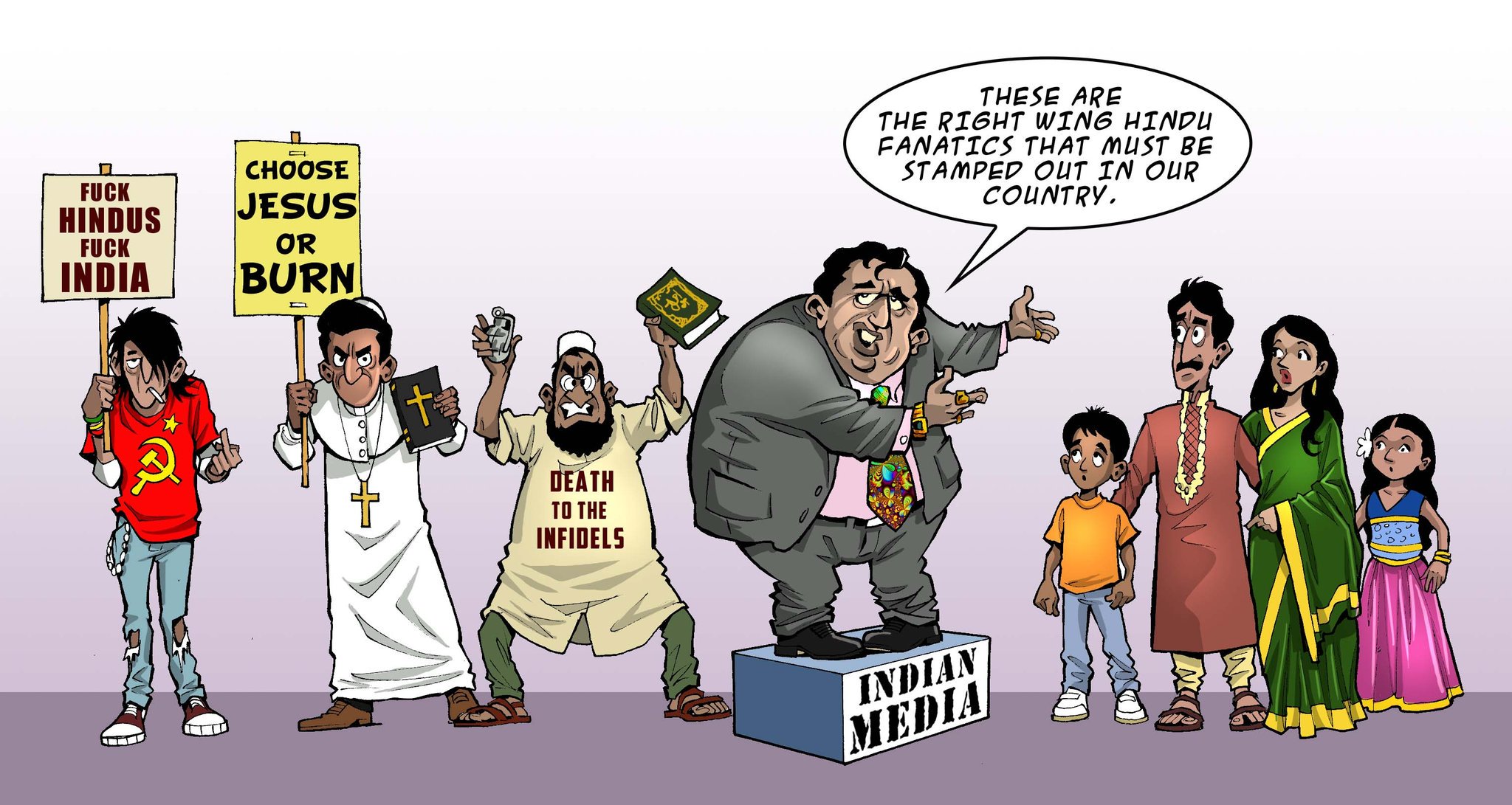
Attempts to manipulate the Dadri incident along the lines of ideological allegiances or hyperventilation on ‘lost secular fabric’ of the country, impassioned lamentations on the ‘signs of growing intolerance of Hindus’ are at worst malintentioned and at best, emotional outbursts lacking sense of proportion, reactive and in a hurry to condemn and declare their dissociation with the alleged ‘wrong of their society’, acting in the same lynch mob fashion that they criticise and by no means indicative of responses of a thinking, aware nation. Objective commentaries by dispassionate, reflective individuals, with any social or historic perspective and insight are rarely seen. Needless to say, these serve to only produce more conflicting images, distorted perceptions and diminish the overall stature of our nation and its intellectual culture.
A friend recently made a perceptive observation which may be repeated in this context:
“Narrative is like the horse in ashwamedha yagna.
Allow the horse free pass and you become liege to the horse’s king. Capture it, you at least have a chance to fight for freedom.”
There is a propaganda war the Hindus are up against. Becoming aware and taking control of our own narrative is not a choice in this situation, but an imperative if we are to survive as a nation.
First appeared as a Facebook post by the author on October 5, 2015 here.
